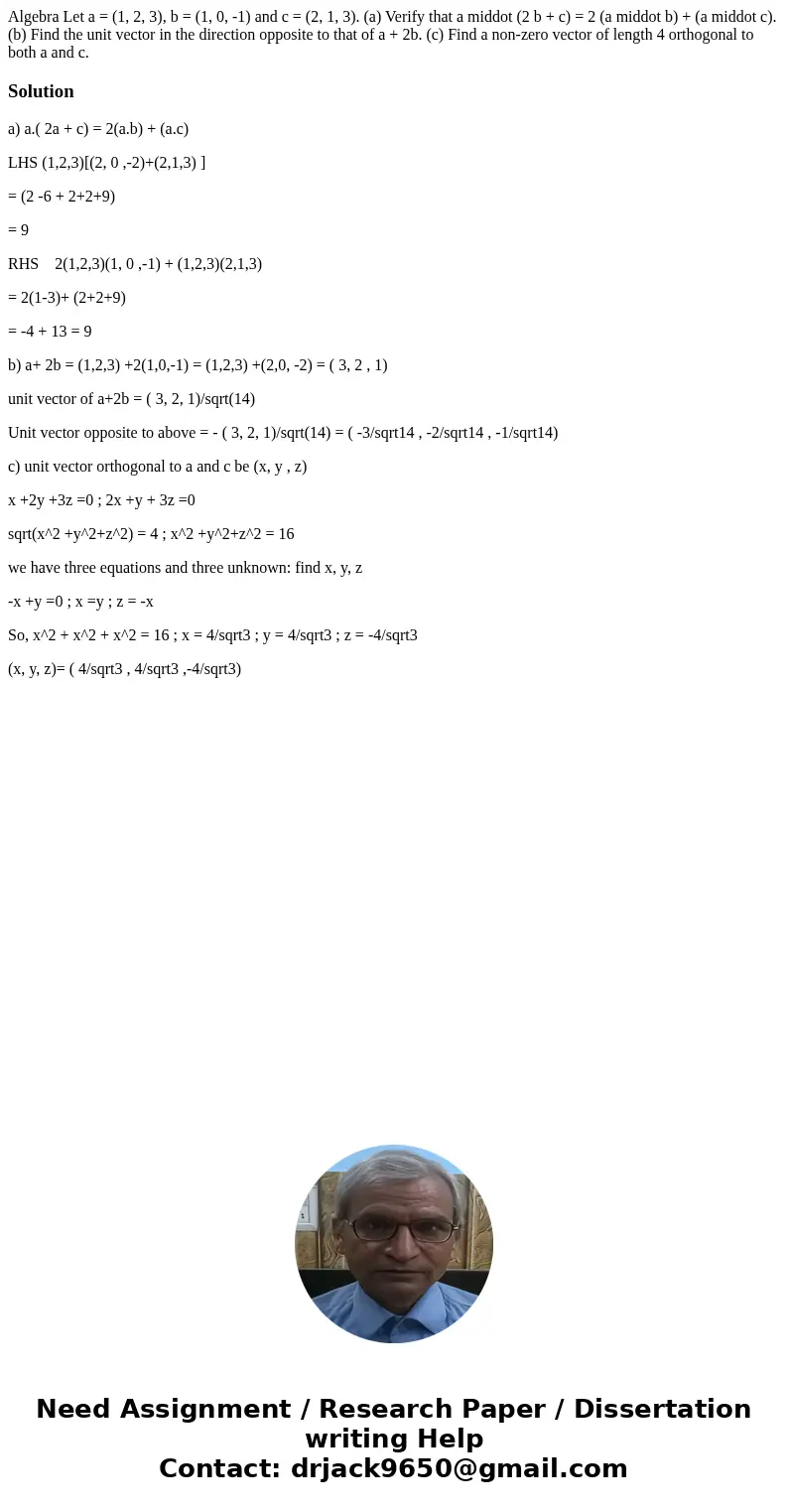Algebra Let a 1 2 3 b 1 0 1 and c 2 1 3 a Verify that a m
Algebra Let a = (1, 2, 3), b = (1, 0, -1) and c = (2, 1, 3). (a) Verify that a middot (2 b + c) = 2 (a middot b) + (a middot c). (b) Find the unit vector in the direction opposite to that of a + 2b. (c) Find a non-zero vector of length 4 orthogonal to both a and c.
Solution
a) a.( 2a + c) = 2(a.b) + (a.c)
LHS (1,2,3)[(2, 0 ,-2)+(2,1,3) ]
= (2 -6 + 2+2+9)
= 9
RHS 2(1,2,3)(1, 0 ,-1) + (1,2,3)(2,1,3)
= 2(1-3)+ (2+2+9)
= -4 + 13 = 9
b) a+ 2b = (1,2,3) +2(1,0,-1) = (1,2,3) +(2,0, -2) = ( 3, 2 , 1)
unit vector of a+2b = ( 3, 2, 1)/sqrt(14)
Unit vector opposite to above = - ( 3, 2, 1)/sqrt(14) = ( -3/sqrt14 , -2/sqrt14 , -1/sqrt14)
c) unit vector orthogonal to a and c be (x, y , z)
x +2y +3z =0 ; 2x +y + 3z =0
sqrt(x^2 +y^2+z^2) = 4 ; x^2 +y^2+z^2 = 16
we have three equations and three unknown: find x, y, z
-x +y =0 ; x =y ; z = -x
So, x^2 + x^2 + x^2 = 16 ; x = 4/sqrt3 ; y = 4/sqrt3 ; z = -4/sqrt3
(x, y, z)= ( 4/sqrt3 , 4/sqrt3 ,-4/sqrt3)

 Homework Sourse
Homework Sourse